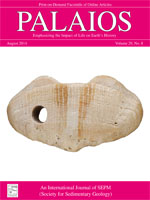Hundreds of reservoirs in the western United States are managed on public lands and often contain significant paleontological resources. GIS (Geographic Information Systems) analysis of fossil collecting can help identify factors that affect fossil conservation in these multiuse facilities. Eighty years of collection history by Idaho Museum of Natural History personnel of Pleistocene vertebrates at the American Falls Reservoir, Idaho, United States, show that collections by the museum do not correlate with points of reservoir access or to coastal slope, and suggest that instead, collection history most likely tracks actual fossil productivity. Land management practice to install riprap rock barriers to mitigate coastal erosion is effective at reducing exposure of fossils at the decadal scale, thereby meeting the avoidance criterion of fossil preservation which seeks to limit exhumation of fossil resources. However, the first five years following riprap installation show a significant increase in fossil collection. This finding suggests that fossil surveys should be incorporated not only as part of the installation process, but as part of monitoring efforts for at least five years following installation.
How to translate text using browser tools
1 November 2014
COLLECTING HISTORY OF VERTEBRATE FOSSILS AT AMERICAN FALLS, IDAHO: A RESERVOIR OF DATA TO INFORM LAND-USE POLICY
ANDREW E. STRATTON,
LEIF TAPANILA,
JEFFREY H. STRATTON
ACCESS THE FULL ARTICLE
It is not available for individual sale.
This article is only available to subscribers.
It is not available for individual sale.
It is not available for individual sale.

PALAIOS
Vol. 29 • No. 8
August 2014
Vol. 29 • No. 8
August 2014




